Eureka Company
As you can see from the 1868 prospectus seeking investors, times were very tough for industry after the Civil War. Not only had the war brought physical damage, due to the raids by Wilson, but the damage to the South's economy was more severe. Capital was in short supply, and personal fortunes were lost.
According to Woodward, "the plant remained in wrecked condition until sometime in 1872 when the Eureka Mining and Transportation Company was organized to take over the old Red Mountain Company. Daniel Pratt, a wealthy cotton gin manufacturer from South Alabama [Prattville, and a member of the Board of the South and North Alabama RR] supplied a considerable portion of the capital."
The following item comes from Armes, p. 241:
"The coal mines of the Red
Mountain Company [at
“On May 13, 1872, he writes 'Daniel Pratt and Henry DeBardeleben came to the Helena Mines, and informed me that they had bought a controlling interest in the Red Mountain Company's mining and furnace property and requested me to keep charge of the Helena Mines, and also do some surveying at once at the Oxmoor furnace property. I got on their waiting train and accompanied them to Oxmoor, where they directed me to survey the boundaries of the lands, especially the Red Mountain Company’s lands, and locate a mine in the Red Ore, and a tram road for the supply of the furnaces with said ore, and more especially to notify the people in the houses at the works to please vacate them as they would be needed in the course of a month for the hands.'”
Part of this story is that the Red Mountain Company led to a milestone event in the development of Birmingham's iron industry. The need to determine the viability of using local coal to make coke to use in place of charcoal as a fuel for iron making, led to the formation of the Eureka Company from the Red Mountain Coal and Iron Company assets and plant.
What intrigued Birmingham Rails, however, was the note above about a tram road and the fact that several maps indicate that a tram road ran from Red Mountain to the Eureka Furnace at Oxmoor. Several examples are shown below using maps from the UA Map Archive referenced elsewhere on this site. These seem to indicate that the tramway was there by 1887, and was gone by 1905. Armes account refers to a "tram road" above, and Woodward states "A narrow gauge railroad of two and one-half miles was constructed to the ore mines" [p. 108] This account leaves the impression that the "narrow gauge railroad" was constructed in 1872.
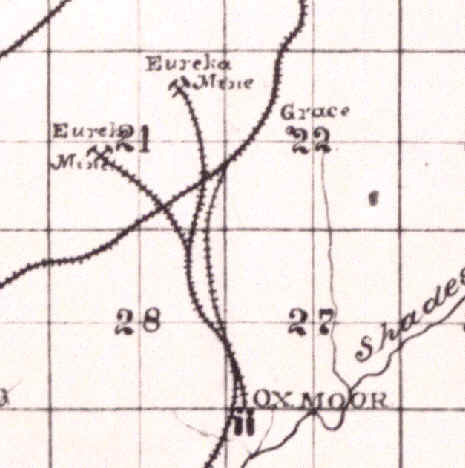 |
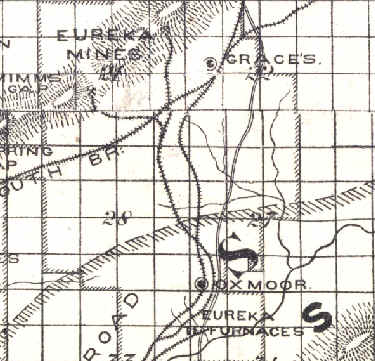 |
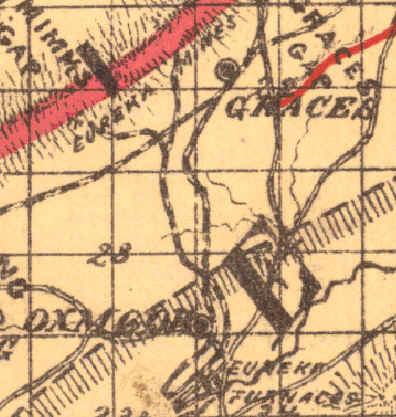 |
|
Riccio, Sloan, and Vedeler, 1887 |
Greig, 1889 |
Schoel, 1892 |
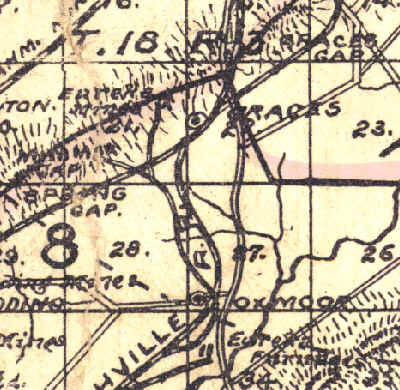 |
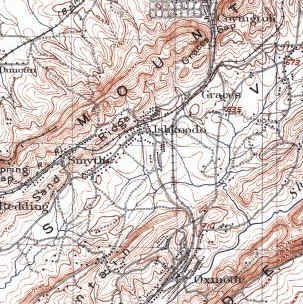 |
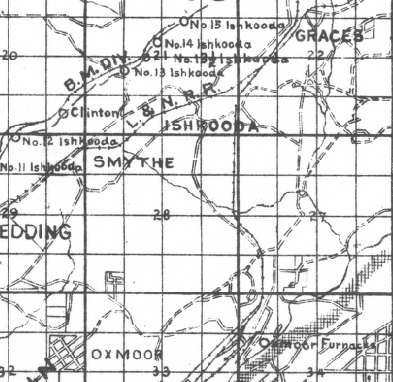 |
|
Miller, 1897 |
USGS, 1905 (printed 1915) |
Cox/Andrew, 1913 |
Perhaps the best map is one that was drafted by the person who likely laid out and oversaw the construction of the tramway, Joseph Squire.